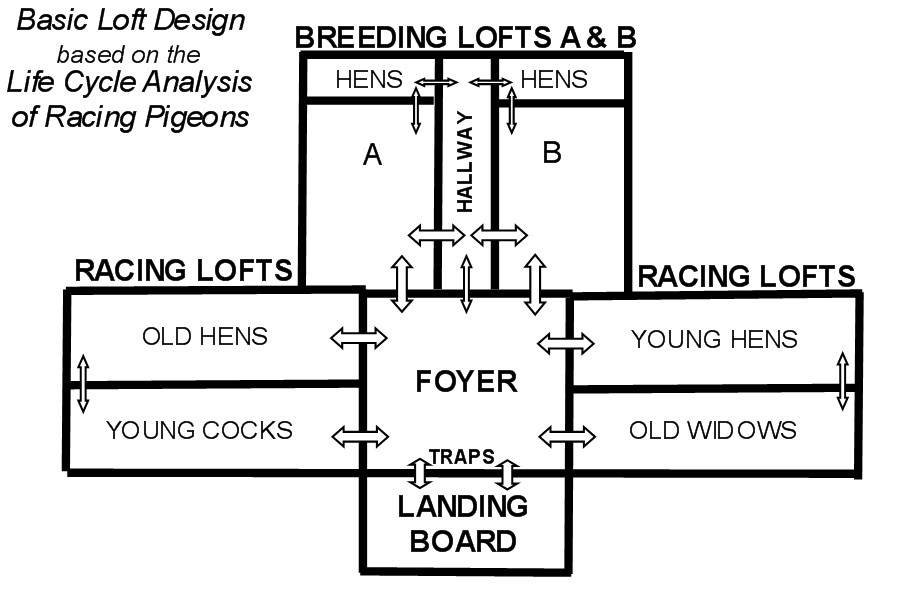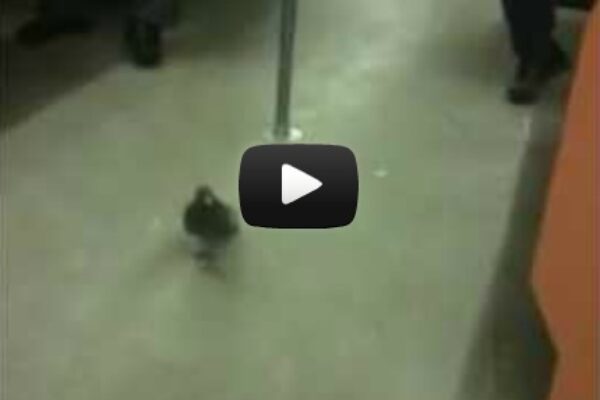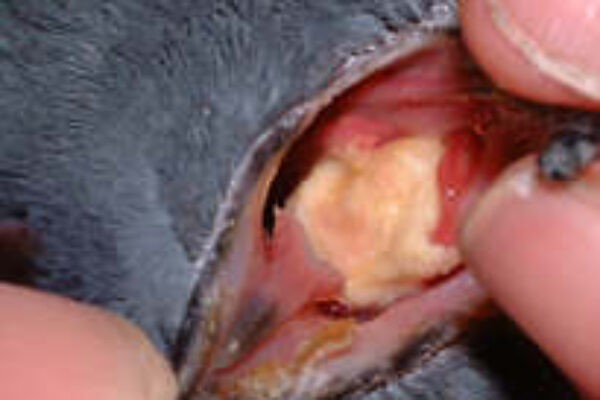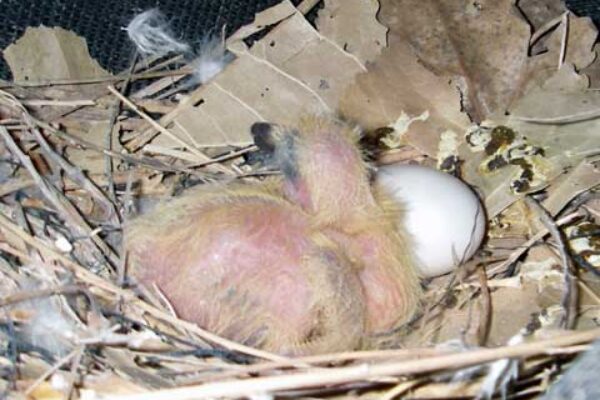Loft Construction and Design
In order for your race teams to perform well, the construction of your pigeon loft should reflect the type of race management system that you teach in Pigeon School. The following Basic Loft Design is based upon the widowhood system that I teach in my Pigeon School and represents the life cycle of my racing pigeons from hatching through retirement. Young birds are raised in the breeding loft from racers that are retired after they reach an AU championship or some other type of significant performance distinction or merit.
At weaning, the young birds are moved into the Young Cocks and Young Hens sections. The wire nest fronts in the widowhood nest boxes in these two lofts are folded to the back wall which divides the box in half in order to make two box perches out of one widowhood nest box. Twenty four widowhood nest boxes can become 48 box perches. When the final young bird team is selected on or about July 1st, the wire nest fronts are opened to make full widowhood nest boxes again. After the young bird season has concluded, the Young Hens are moved into the Old Hens section and the Young Cocks are moved into the Old Cocks section. These movements vacate the Young Cocks and Young Hens sections for the next young bird season. Old Cocks and Old Hens that achieve some type of champion or performance status are retired into the breeding loft.
A significant component of the loft is the trapping system. All of the pigeons trap into one common foyer or hallway for their entire lives. The breeding loft, the young bird loft and the old bird loft are not three separate buildings. These three lofts are integrated into one compact, efficient and extremely functional loft. Young Birds exercise and trap into their designated sections. Old Birds exercise and trap into their designated sections. Breeders exercise and trap into their designated sections of the loft. I find it cumbersome and inefficient to trap pigeons into three lofts spread all over the yard or garden; as well as retrain young birds to trap into an Old Bird loft and retrain Old Birds to trap into a Breeding loft.
The Basic Loft Design allows champion racing pigeons to live in the same loft for their entire lives. There can be modifications to this basic design that includes a feed and mud room, a section for extra pigeons, etc. Each loft is divided into sections. The right wing of the racing loft is divided into six 5 foot sections. So is the left wing. The Breeding Loft is divided into four sections not including the two Hens sections. This design is meant to represent a basic loft design. This design can be modified in many functional ways. For instance, since the landing board is about six feet high, the area under the Landing Board can become an aviary, a feed room, a small office area to wait for the race birds to return or a section for extra pigeons.
The nest boxes are all designed exactly alike. As I stated before, in the Young Bird sections of the loft – from February to July 1st – the nest boxes are divided in half to create twice as many box perches as former nest boxes.
A proper loft should be built for the comfort of fanciers as well as the comfort of pigeons. No more than twelve pigeons should inhabit a 5 X 6 ft. loft section. That is usually 6 racers plus 6 widowhood mates or twelve young birds before July 1st.
A fancier’s loft design and construction should reflect the race management system that he or she teaches in Pigeon School. A helter-skelter loft reflects a helter-skelter race management system. A loft that is scabbed together with little or no thought and planning generally reflects a very poor race management system and poor or sporadic race results. A well built well-organized loft usually reflects an organized well-planned race management system. There is a reason that most Belgian lofts are relatively nice looking and well organized. Most Belgian fanciers know how to properly teach and train their pigeons. While not all of them are wealthy enough to afford a picturesque loft built out of beautiful brick or stone; most of their lofts are very well-organized. Why? Because most Belgian fanciers know the basics of how to race pigeons motivated by a well executed race management system that is reflected in their loft design. It’s the only way to successfully compete in the Antwerp Union or the entire country.

Loft Construction and Design by Dr. John Lamberton
The Leading Online Pigeon Racing and Racing Pigeons Magazine – The Pigeon Insider









very very nice loft design is usefull raceing piegon this is called man power
Nice article!
Hi Dr.Lamberton, my name is Danny and i’m getting ready to start my first loft, i’ve been researching loft designs and i came across yours. I would really appreciate if yu would e-mail me a diagram or blue print that i can follow of yur design. I want to start off with the widowhood program and your design fits it the best. Thank you for any and all help.
Soon to fly Danny Myers
I love your articles, too, and enjoy reading them. Thanks! I have a nice loft but would also welcome pictures of loft designs to maybe add some things.
hi there, great loft design, I like the fact they get to enter through the same trap their entire lives
very good idea for your loft design go to top pigean inside
i an try to get started flying brids
i would like to find some good birds and mybe a beter drawing on a loft please
thanks a lot,very nice article.,GOD BLESS.. MORE POWER.
hi if any body can help me im going to redo my loft pretty soon its my second year ive made some mistakes with my first loft any way i dont havr much space i cant go more than six feet highten10 foot wide and 12 feet long if anybody can gime me an idea please email me [email protected] thanx